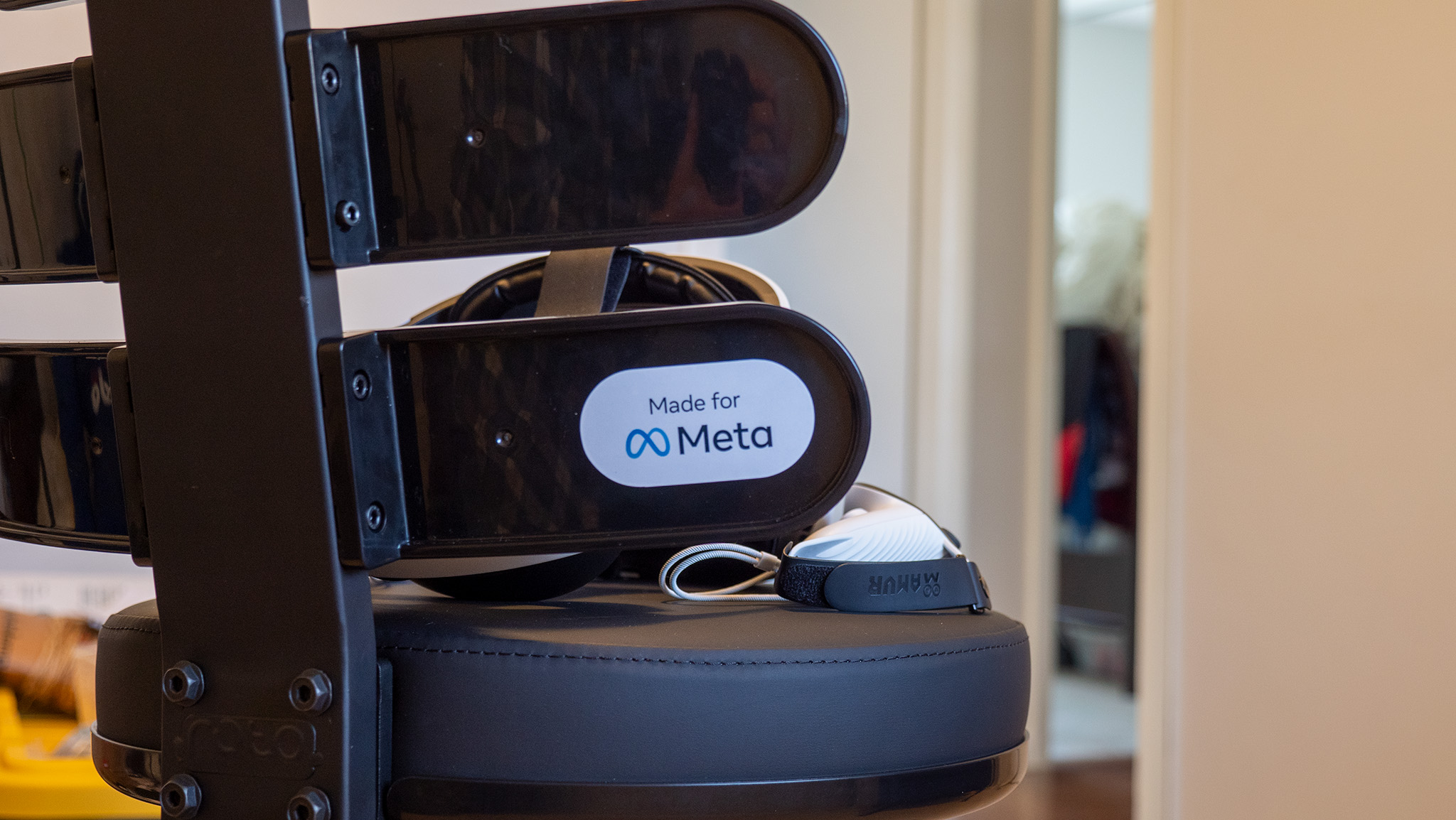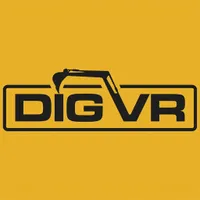Dig VR with a Roto Chair is insane
I never knew a Meta Quest game could be this immersive.


In his weekly column, Android Central Senior Content Producer Nick Sutrich delves into all things VR, from new hardware to new games, upcoming technologies, and so much more.
One of the things I love most about the Meta Quest platform is its simplicity. It's a console, so the only thing I need to do to play games is put it on my head and start the game. So, it's not often that I try out crazy accessories that add layers of complexity to the experience.
But the Roto VR Explorer chair is the coolest gaming chair I've ever used and is especially helpful if you suffer from motion sickness when playing VR games. Despite being a veteran VR gamer for the last decade, "smooth turning" in VR games still makes me feel woozy and dizzy, but the Roto VR Explorer chair fixed all that.
Roto VR Explorer is a made-for-Meta Quest chair that rotates when you turn your head, recreating the feeling of inertia that takes place in your inner ears when you physically move around in real life. It works with all Meta Quest games but has special integrations in games like Dig VR. It's pricey at $800, no doubt, but I've never used a piece of immersive equipment that's this easy.
Digging with authenticity

Dig VR launches today, November 14, and brings about authentic heavy machinery simulation with a mission structure similar to Power Wash Simulator or Lawn Mowing Simulator, plus plenty of minigames to keep things fresh.
Part of the authenticity, at least in my case, is playing the game while sitting in the Roto VR Explorer chair, which wirelessly connects to Dig VR to rotate and vibrate along with the machinery I'm using. It creates one of those all-important moments of immersion that you can only get in VR.
There's just something ridiculously cool about being in a simulator that moves and shakes at a theme park or arcade, but something even better about it being in your own house. When I moved the digger and felt the chair realistically jerk and turn along with the machinery, I knew I had found something special.
Dig VR's controls allow you to use the controller in a more traditional video game way, using dual joysticks to move the rig around and control the boom arm for digging, or opt for the full simulator approach and grab the physical controls inside the cockpit.
Get the latest news from Android Central, your trusted companion in the world of Android
The two levers in the middle move the individual treads underneath the digger, letting you move it around in any direction you want. The top section of the digger is mechanically separate from the bottom portion where the treads are, so you have separate joysticks that can be grabbed and tilted in any direction to spin the cockpit and move the boom arm.
Dig VR is the ultimate digging simulator! Build your business in the town of Diglington, earning money to get bigger and badder diggers so you can complete bigger and badder jobs. Plenty of humor keeps things like, and both casual and serious players will find a home with a myriad of control schemes and options.
Buy now at Meta Horizon store
I'm not usually super into simulation games, but the feeling of authenticity I got from controlling this big digger while sitting in the Roto chair convinced me that I ought to try them more often. I'd need to be in the mood to do so — this game is simulating a job that people usually get paid to do, after all — but carving out my own business in the quaint town of Diglington was surprisingly enjoyable, especially with the Roto chair.
Of course, if you don't have the chair or don't want to spend the money on it, Dig VR is still a lot of fun and has options to significantly simplify the control scheme to minimize frustration. My son preferred using the joysticks on the controllers, for instance, while I found that locking in-game controls to just wrist rotation made it easiest for me to control the diggers.
The game has over 70 different customization options for each digger, and you'll get new diggers and tool heads throughout your time in the career mode. If you're not feeling the scored mode, there's also a zen sandbox mode for each level that lets you dig to your heart's content.
It even has multiplayer, so you can dig in while chatting with friends. Sometimes, you just need a fun activity to get the good conversation flowing, and Dig VR is a strangely ideal way to do this.
I've never used a gaming chair like this one

The Roto VR Explorer chair, as you might imagine, given its price, isn't just made for Dig VR. Rather, it works with any Meta Quest game. Better yet, there's no configuration involved to get playing. Just attach the Pokeball-looking puck somewhere on your Quest — I found sliding it on the top strap to work best — and turn your head to turn the chair.
You don't even need to plug anything in since it's totally wireless and operates independently from your Quest. I had actually assumed a manual or some instruction was left out of the box because this felt overly simple! Even the puck is wirelessly charged when placed in the cradle in the base of the chair, ensuring it's both charged and paired with the chair automatically.
The puck can be connected to your headset via the 3.5mm audio jack to enable rumble, but I've found that I don't care much for haptic motors that use sound to create the effect. It's too reliant on a game's sound effects working perfectly with the speaker and you almost always have to turn music completely off which just kills the vibe for me.

That little puck will automatically pair with any Bluetooth earbuds or headphones, something that's not usually possible with VR since Bluetooth products have added latency. I used the crazy affordable CMF Buds Pro 2 to test because they have a built-in audio dial on the case.
While I didn't care for the sound-driven haptics very much, a game like Dig VR with its native integration — just hit "connect to Roto VR Explorer" in the game's menu — will more intelligently use this haptic motor without the extra unneeded vibration that comes from the sound-driven implementation.

The chair itself is expertly crafted and well-made, with strong metal parts and connectors that won't bend. Putting it together is a bit like assembling something from IKEA, although it'll take you less time if you're not an idiot like me, who apparently can't read directions.
A port on the swivel cylinder underneath the chair magnetically connects to the haptic motor, and there's even an ingenious USB-C port on it so you can charge your Quest while you play. This is situated on the back of the column and moves with the chair to ensure you don't get tangled in it.
The cushions on the chair and back are all quite firm, so they should hold up well over time. The material used to cover the pads is also easily cleanable if you sweat a lot while playing.





While all of this is very cool, the most important part of the chair is the fact that the physical movement completely fixed the dizziness I feel when using smooth turning in VR. While I've always used snap-turning in VR games to mitigate this issue, smooth turning is far more immersive especially when paired with natural head movements.
In fact, the Roto VR Explorer worked perfectly with every game I tried. Racing games with smooth turning, like EXO Cars, or even other simulators like Lawn Mowing Simulator, work incredibly well for different reasons.
EXO Cars is a fast-paced racing game that would usually make me feel a bit dizzy, but the subtle movement the chair makes when turning my head to anticipate turning the car mimics real inertia enough to make it feel comfortable. Lawn Mowing Simulator is much slower but still feels great in the chair for the same reason EXO Cars does.
But what about games that don't have you riding in vehicles? Those all work perfectly with the chair, too!
While I only made a video of me playing Batman Arkham Shadow, I also played several other games including Metro Awakening, Medieval Dynasty, and even Blade and Sorcery to test out the stability of the chair and its ability to quickly move around.
What I found was that this is significantly better than any old swivel chair for a number of reasons. First, the heavy steel design ensures the chair stays put even on carpet. There are also wheel locks to keep it in place for other surfaces. If you happen to tip the chair a little bit, an alarm will sound, so you know you need to calm down a bit. I only ever heard this alarm when sitting down in the chair, though.
Second, it moves where you look. This meant I stopped using the right stick to artificially turn and, instead, treated movement in the chair more like I was standing. The difference, of course, is that I wasn't using the lower half of my body at all. This is great for folks who need to remain seated for any physical reason or just want to have a more relaxing session.
Ironically, I found that I enjoyed playing Metro Awakening better while seated in this chair because it eliminated the feeling that I needed to stay physically crouched while sneaking around in the game. Sure, I could use the game's virtual crouch by clicking the thumbstick but where's the fun in that?
It might be expensive but I've been thoroughly impressed with the Roto VR Explorer chair. It's more than just a boring old swivel chair as it provides the necessary inertial movement to combat motion sickness. You could use your legs to move a swivel chair around but it doesn't register in your brain the same way and it's a lot more work. Might as well just stand if you're going to do this, in my opinion.
Overall, this chair is incredibly impressive and did exactly what it was designed to do: completely eliminate motion sickness in VR.

You must confirm your public display name before commenting
Please logout and then login again, you will then be prompted to enter your display name.





